Lenin was forced to attempt a reconstruction of his understanding of the world. The reconstruction he achieved was considerable, inasmuch as it resulted in a world view that was entirely coherent and consistently revolutionary.
It was a rather less impressive achievement in terms of its complexity or subtlety and, indeed, its adequacy. It comprised three basic organizing principles: imperialism, the labour aristocracy and the soviet. Imperialism was the problem, the labour aristocracy was the basis of the continued existence of the problem, and the soviet form encapsulated Lenin's new answer. Concisely, the development of capitalism into imperialism had provided the bourgeoisie in the metropolitan countries with the opportunity to undermine the proletarian progress to revolutionary politics that had previously been considered inevitable. The labour aristocracy was a section of the proletariat that had been detached from its true class allegiance, and consequently become enmeshed in the fabric and institutions of bourgeois society. Thus, the bourgeois state, in both its administrative and political forms, had become the core of the process whereby the organizations of the proletariat were delivered up to imperialist politics. Lenin hinted at a fairly sophisticated model of this relationship when he coined the term “Lloyd-Georgeism” to describe the impact of social reform upon the labour movement. This analytical avenue, however, remained emphatically underdeveloped, and in its place is an argument of a much simpler nature. Reformist politics were, in this argument, not a mass political phenomenon; they were confined to the labour aristocracy.
This reduction is perhaps surprising, and certainly not necessary for Lenin' s project of salvaging revolutionary politics. Lenin could have argued — as we have seen Colletti argue — that the institutional forms of parliamentarism paralysed the revolutionary impulses of the proletariat by a combination of social atomization, manipulation and mystification. The soviet form could have been offered as the counter to all three processes. Such an argument would render redundant a concept of the labour aristocracy as specially significant in diverting the revolutionary process. There is no need to single out any distinct part of the working class as uniquely guilty of bearing, conspiring in, or succumbing to, the culture of social peace and parliamentary progress. But the organizing principle of Lenin's explanation for the split in socialism was not the rejection of parliamentarism, but the definition and critique of the labour aristocracy. It is possible to trace in the development of Lenin's analysis the gradual disappearance of the effects of peaceful decades, parliamentarism, legal organizations, etc, and their replacement by direct and crude material determinants affecting a small minority of the movement: crumbs, bribes, “lucrative and soft jobs” Lenin thus chose to pursue a far simpler analysis which, paradoxically, involves a far more complex and weaker chain of explanation if the soviet form is to be justified.
In that analysis, the proletariat constitutes a “silent majority” — those who have simply not been heard from. But, if the masses do not appear to have succumbed to the charms of parliamentarism and social peace, it is hardly necessary to advocate the soviet form to counter such dangers. At this point in the argument, therefore, there exists no necessary or useful connection between Lenin's analysis of the split in socialism and the Soviet alternative. What I shall seek to do is suggest the necessary connection that in fact does exist. For it seems to me that the institutions of the commune-state that Lenin was to advocate in 1917 derive their viability from a theory of political motivation, and that this theory of motivation can be discovered as the fundamental assumption of the theory of the labour aristocracy.
We can find a concise and representative statement of the analysis in the 1920 preface to Imperialism, the Highest Stage of Capitalism:
Capital exports yield an income of eight to ten thousand million francs per annum, at pre-war prices and according to pre-war bourgeois statistics. Now, of course, they yield much more. Obviously, out of such enormous superprofits (since they are obtained over and above the profits which capitalists can squeeze out of the workers of their “own” country) it is possible to bribe the labour leaders and the upper stratum of the labour aristocracy. And this is just what the capitalists of the “advanced countries” are doing, they are bribing them in a thousand different ways, direct and indirect, overt and covert.
This stratum of workers-turned-bourgeois, or the labour aristocracy who are quite philistine in their mode of life, in the size of their earnings and in their entire outlook, is the principal prop of the Second International, and in our days, the principal social (not military) prop of the bourgeoisie. For they are the real agents of the bourgeoisie in the working class movement, the labour lieutenants of the capitalist class, real vehicles of reformism and chauvinism.
I shall not seek to present a comprehensive critique of the theories of imperialism and the labour aristocracy. Although it should be clear from what follows that I find both of them inadequate as explanatory categories, there already exists a varied literature to this effect, and to retell it would be redundant. I shall seek only to register some points which may reveal the theory of political motivation produced by these concepts.
First, Lenin's concept of imperialism is one that cannot be seriously sustained by the arguments that he presented. In Imperialism, the Highest Stage of Capitalism, written in 1916, Lenin outlines the general features of the imperialist stage of capitalism, stressing what he considers to be the key factor — the export of capital from the metropolitan countries to the colonies or semi-colonies. In chapter eight he considers the effects of this on the metropolitan nations. An extensive quote from Hobson advocates the idea that the western nations were becoming totally parasitic in their economic role, drawing all productive wealth from the Asian and African continents. The result, Lenin suggests, will be the transformation of the proletariat into “great tame masses of retainers, no longer engaged in the staple industries of agriculture and manufacture, but kept in the performance of personal or minor industrial services under the control of the new financial aristocracy. The condition of southern England is advanced as a foreshadow of what might come to pass. He then proceeds to offer evidence for Hobson's analysis. He seems to support the vision of the gradual disappearance of manufacturing capital from western Europe. But his evidence is rather bizarre: an increasing proportion of land in England is being taken out of cultivation and used for sport and the diversion of the rich; England spends annually 14 million pounds on horse-racing and fox-hunting; the number of rentiers in England is about 1 million. The corollary of those tendencies is this: “The percentage of the productively employed population to the total population is declining” — from 23 per cent in 1851 to 15 per cent in 1901. The surprising scale of these figures would have given anyone less committed to the thesis pause for thought. In fact Lenin is equating “productively employed” with those employed in the basic industries, which by any economic theory is an insupportable device.
Of course it is true that the economic structure of the country was undergoing change, but both Lenin and Hobson entirely misconstrued what was happening. An advanced stage of industrialization produces tendencies for the service sector to undergo expansion at the expense of the primary and secondary sectors. Together with the development of the service sector went the extension of the factory system into previously marginally involved sectors, and the transformation into a factory workforce of parts of the population whose situation was previously quite different. The decline in the numbers employed in domestic service and the reverse process of the increase in industrial employment of women, prefigured by developments in the First World War, are indicative of this. Note should also be taken of the growing industrialization of agriculture, and the growing productivity of labour within the manufacturing sector which must, on the one hand, produce a tendency for slow or negative growth in employment in that sector and, on the other, growing employment among those sectors needed to service the technical developments reflected by this rise in the productivity of labour.
Lenin therefore constructed an entirely mythical sociological grouping under the category “labour aristocracy” — “great tame masses of retainers”. They lived off the “crumbs” from the table of imperialism; they were directly bribed out of superprofits. Lenin even gave a rough estimate of the size of this bribe, although no attempt is made to define the method of distribution of this subvention. But what is clear is that Lenin nowhere considers this “bribe” as passing through, or deriving from, the process of production in the metropolitan countries. High wages do not come from the worker's position in the production process; they are purely the dividend of parasitism. The labour aristocrats have become the “coupon-clippers” of the working class. Clearly, such a mechanism can only have an utterly corrupting influence on those in receipt. Recipients of such an unearned and unjustified subsidy will surely fight to the death to defend the imperialism that provided it. The labour aristrocrat becomes akin to the Roman proletarian, whose existence was subsidized by the slave economy, unlike the non-aristocracy at whose expense society lives. But what an absurd inversion of reality this constitutes, and its absurdity clashes more fundamentally with the assumptions of Marxian social theory than perhaps any other.
The higher paid worker in Lenin's time achieved and maintained his position due to his skill — or rather to the short supply of that skill — or his organization, and usually by a very specific combination of both. It is puzzling that such a simple fact should escape Lenin's analysis, but two factors may account for this. The first, of course, is that Lenin's project excluded the realization: he was not seeking to explain the origin of the higher-paid worker, but simply to utilize it as a link in the chain of his explanation, proceeding from imperialism to the politics of the day. Second, there was little in Lenin's experience, or in his field of interest, to direct his attention to the simple explanation. Imperialism, the Highest Stage of Capitalism is a remarkably one-sided study of early-twentieth-century capitalism. It concentrates exclusively on methods of ownership and finance and excludes any consideration of the industrial process itself, ie what was being produced, and how. The remarkable changes in the techniques of production and the nature of finished products is entirely absent. One may wonder precisely what image Lenin possessed of the twentieth-century factory and those who worked there.
Thus, if we read Imperialism as at least in part directed to establishing the existence of a distinct social grouping which is essentially parasitic and unproductive, we have to register Lenin's attempt as a failure. He has failed to prove that such a group emerges as a consequence of economic development in an imperialist phase. As a result, he has further failed to demonstrate the existence of a social grouping which will be motivated to defend its native imperialism as a matter of automatic self-interest.
My second point concerns the assumptions which would be necessary to sustain the argument for this postulated social group. Lenin makes a silent but necessary assumption that the wages of members of the proletariat have a historic tendency to maintain, and always return to, a certain physical minimum. Otherwise there is nothing to explain in the particular condition of the labour aristocracy. This concept of an “iron law of wages” is strangely resilient in the Marxian tradition. Bernstein made use of it as a stick with which to beat Marxism, and his criticisms were justified. He was castigating a belief that was widely held and articulated among the orthodox theoreticians of the movement. Kautsky included it in his popular explanation of the Erfurt programme in 1892: “industrial development exhibits a tendency, most pleasing to the capitalist, to lower the necessities of the working man and to decrease his wages in proportion”. It became a commonplace article of faith in the communist movement, in defiance of whatever evidence to the contrary might have suggested. It was possible fifty years later for Kuczynski to insist:
conditions among the working class in Britain, on the average, did not improve during the second half of the nineteenth century … Whenever we are able to point to improvements we are at the same time, unfortunately, obliged to point to deteriorations which overcompensate the improvements in the conditions of the working class during the last fifty or hundred years.
The author, a Marxist historian, could only support this statement by suggesting a picture of British capitalism which left little room for the development of forces and techniques of production. Thus, in a discussion of productivity changes, he ascribed by far the greatest importance to the aspect of the “increased intensity of labour per worker”, ie the workers working harder, and only a minor significance to the revolutionizing of the techniques of production.
It has been argued that there is in fact no ambiguity on this issue in Marx's political economy. Nevertheless we can only note the frequent recurrence of this theme within the Marxian political movement. Such an assumption could clearly play an important political role at moments when employers have enforced reductions in wages and conditions in specific conjunctures. It enables a political argument to make the transition from the problem of the moment to the problem of the system. It is clearly a matter of some speculation how effective the theory of revolution remains when Marx's theory is substituted for the iron law of wages. When Colletti declares that: “It is the dependence which ties the workers to the will of the capitalist class, and not their absolute poverty'', in other words, capitalist appropriation is not exclusively or primarily an appropriation of things, but rather an appropriation of subjectivity, a theory of revolutionary action becomes markedly more problematic.
The iron law of wages demands little empirical refutation. Rising living standards were common to the British working class in the latter part of the nineteenth century. There was undoubtedly a minority that was better off than most, but the differential was modest. It should also be noted that the existence of differentials was in no way unique to the imperialist stage of capitalism. In the light of the longstanding nature of the phenomenon, and the relatively minor material differentiation between the skilled and the unskilled, imperialist superprofits are an unnecessary import into the discussion. Far from the labour aristocracy being a creation of the bourgeoisie for political motives, made possible by their returns from the colonies, it is further arguable that such differentials underwent a tendency to diminish for some time before Lenin wrote his book.
Third, whatever the economic facts, Lenin's appreciation of the politics of the higher paid worker was an inversion of the truth. Clearly, ideas of respectability and conservatism could very easily flow from social stability and, more specifically, from the craftsman's elevated role in production. But very often situations of crisis or structural change produced among such people a fabric of consciousness that made them extremely and uniquely amenable to radical ideas. The experience of the communist parties after the war testifies to this. In most parties, workers from the skilled trades constituted the largest single elements of the membership, and if one considers the relatively small size of those groups in the working class as a whole, the attraction of communist politics for such people is clearly markedly stronger than among unskilled workers. Nevertheless, for Lenin, the primary task of the communist parties after the war remained an “immediate, systematic, comprehensive, and open struggle ... against this stratum. The obverse of the dismissal of the 'top 10 per cent' was an exceedingly sanguine picture of what Lenin terms the 'revolutionary masses'”. In August 1914 he drew a sharp distinction between the opportunist leaders and the mass of the working class, insisting that it was “imperative to appeal to the revolutionary consciousness of the working masses, who bear the entire burden of the war and are in most cases hostile to opportunism and chauvinism”, and in 1915, he declared: “It is a falsehood for anybody … to say that the 'masses' of proletarians have turned towards chauvinism; nowhere have the masses been asked.” Clearly such assertions had very little relation to the reality of the time. Thus Lenin's political sociology of the working classes of Western Europe, already theoretically dubious, can find no serious empirical support.
My fourth point concerns the effects of the weaknesses outlined above upon any more general theorization of the sociology of class and politics. It will be remembered that early in his career Lenin advanced a particular version of the relationship between the two. He then asserted that, without the activity of political parties, the working class was incapable of developing a politics that escaped from what he called “trade union consciousness”. He had no reason to ascribe to the working class a mass politics that automatically reflected their class interests. Even later, during the 1905 revolution, his assertion that the working class was “spontaneously social democratic” was linked to the prior activities of political radicals within the labour movement, who had made the ideas available throughout the working class; and it should be noted that such a social democratic consciousness at that time probably for Lenin amounted to little more than a broad sympathy with the general aims of the overthrow of autocracy. When he suggested the existence of a similar spontaneous political ideology among the masses after 1914, he was in fact suggesting the existence of ideas and sympathies considerably more sophisticated and rigorous; sympathy not merely for social reform, political democracy and social justice, but for specific attitudes towards conjunctural issues of the day.
Lenin's thesis on “trade union consciousness” was in itself not notably sophisticated, but it did contain the possibility of elaboration into a reasonably adequate statement of the culture of a subaltern class. It could, in other words, have been developed into a concept somewhat akin to Gramsci's idea of hegemony, wherein there is an appreciation of the complexity of the way in which society, class and culture constitute the network of meanings through which people see the world and experience their activities. As long as Lenin did not assume political consciousness to be an automatic reflection of class position, the opportunity remained for him to appreciate the political domain in all its diversity and complexity. But it must be pointed out that the “trade union consciousness” theme itself was not even a simpler version of Gramsci's sophisticated sociology. In itself, it remained true to Lenin's reflectionist epistemology, for trade union consciousness is little more than a reflection of the specific factory situation in which the worker is placed: it does not allow room to take into account the far more important determinations that existed “outside” the workplace: national culture, religion, socialization, authority patterns, etc — not forgetting politics itself.
Nevertheless, Lenin remained for some time aware of sociological tendencies that produced in the working class a resistance to his politics. He referred to Engels' castigation of the bourgeious “respectability” which has grown deep into the bones of the workers in his discussion of England. In 1908 he suggested that the material locus of these tendencies lay in the “small producers [who are] being cast into the ranks of the proletariat as capitalism develops. Two years later he made an attempt to define the causes of “opportunism” in broader terms. The continued growth of the labour movement itself constantly introduced to its ranks those unschooled in its practices and ideology; the development of capitalism is uneven in pace and depth, recruiting to the labour movement many who were unable to make the break with the ideology of the enemy; the oppressive aspect of capitalist development — its degradation, its poverty — even counterbalanced the potential inscribed in the newly disciplined and organized workers; and the activities of the bourgeoisie itself must not be overlooked, as it has developed the tactic of conceding political rights and reforms, which hampered the revolutionary development of the class.
It is worth stressing at this point that even these relatively sophisticated definitions of the origins of political differences in the working class do not legitimise politics. That is, practical ideas that are not sympathetic to Lenin's own are attributed to lags and lacunae in the movement of history; they remain, for Lenin, both incorrect and transitory. Even at this early stage, the possibility that political disagreements might simply testify to different value orientations or to conflicting political strategies is absent. Nevertheless, even such an approach provided for an understanding that was considerably more complex than what was to follow. Lenin was to come to deny the very existence of problematic political ideas withing the bulk of the working class, and replace it with the idea of a clean ideological break between aristocracy and mass.
His first reformulations of the problem after 1914 contain something of the old discussion. He referred to the results of the preceding peaceful period in the development of the labour movement [which] taught the working class to utilise such important means of struggle as parliamentarism and all legal opportunities.
In these writings from 1914 and 1915 there is a dimension that is missing from later works. While attention is already directed to the importance of the labour aristocracy in this problem, their role is subordinate and not key in the analysis. But in his first major theoretical accounting with “opportunism”, The Collapse of the Second International, written in the middle of 1915, Lenin begins to confine the roots of this political practice to much more directly material factors than the “peaceful decades”. The opportunist ideas of the labour aristocracy are no longer simply different from those of the mass of the proletariat in degree — perhaps due to their greater access to political expression and material improvement — but are directly counterposed to the rest of the class. A stratum of “working men” has become “bourgeoisified” during the period of economic growth and social stability, and consequently is isolated from the problems and ideas that permeate the lower masses. It is here that the breeding ground of chauvinist and opportunist ideas may be found.. This is perhaps the first clear indication of the road that Lenin is to travel. The analysis has undergone what, even for Lenin, is a profound impoverishment. Almost ten years earlier he had already suggested a specific connection between “opportunism” and the imperialist stage of capitalism, but he did not attempt to confine the effects of opportunism to a minority of the proletariat. He limited himself to the general suggestion that “in certain countries [colonial profits provide] a material and economic basis for infecting the proletariat with colonial chauvinism”.. But the development of the theory from 1914 onwards is to narrow the causes of opportunism to imperialist superprofits, and the extent of opportunism to a labour aristocracy. Various descriptions of the infected stratum are given. Initially the description is confined to “leaders” — parliamentarian, trade union, journalistic and other.. Then it is extended to “Parliamentarians, officials of the legal labour unions, and other intellectuals ... some sections of the better paid workers, office employees etc.”.
Lenin is dissatisfied with such a definition. It conflates two distinct categories, the “labour aristocracy” and the “labour bureaucracy”. He therefore attempts to define more precisely the sociology of this phenomenon. In later writings there are many attempts to identify the roots of opportunist politics in the labour aristocracy. What is this aristocracy? It variously includes “the better paid workers”, a “petty-bourgeois 'upper stratum' or aristocracy ... of the working class”, “certain strata of the proletariat”, “near-proletarian elements”, “non-proletarian elements”, a “stratum of workers-turned-bourgeois ... who are quite philistine in their mode of life, in the size of their earnings and their entire outlook”, the “upper stratum” that “furnishes the bulk of the membership of the cooperatives, of trade unions, of sporting clubs and of the numerous religious sects”, “a section of the proletariat” that has “become bourgeois”, “workers belonging to narrow craft unions”, those infected by “bourgeois respectability”, etc. A glance at these definitions reveals their remarkable variety — and consequently their conceptual vagueness. If Lenin were attempting to proceed from a general theory of the roots of opportunism to investigate the specificity of the phenomenon in various countries, such oscillations would not be remarkable. Precise analyses would show differentiation according to national context. But this is not a precise analysis. These definitions are taken from attempts to state a general theory of opportunism. In this context such vagueness of definition points to problems in the theoretical schema itself.
Subscribe to:
Post Comments (Atom)







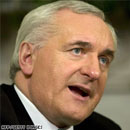

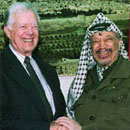



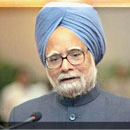
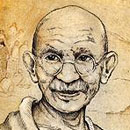
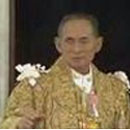
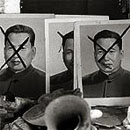










0 comments:
Post a Comment